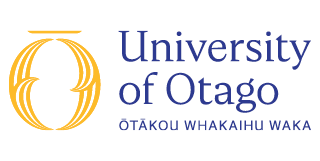Overview
The application of the principles of physical, geometric, physiological optics and ultrasonography to current and future ophthalmic clinical practice, including instruments which facilitate the examination of the human eye and the detection of abnormalities that may degrade image formation in the human eye.
The Department of Medicine offers the Postgraduate Diploma in Ophthalmic Basic Sciences (PGDipOphthBS), taught in conjunction with the University of Sydney. This consists of four 30-point papers, which can be taken full time over a year or part time up to five years. This diploma is intended for medical graduates with at least two years' experience who are either wishing to embark on a career in ophthalmology or in a recognised training programme and wish to enhance their understanding of the ophthalmic basic sciences. The diploma is based on the Royal Australian and New Zealand College of Ophthalmologists' curriculum, which has been extended to include clinical correlations where appropriate.
About this paper
| Paper title | Ophthalmic Optics |
|---|---|
| Subject | Ophthalmology |
| EFTS | 0.25 |
| Points | 30 points |
| Teaching period(s) | 1st Non standard period (19 February 2024 - 15 June 2024)
(Distance learning)
2nd Non standard period (29 July 2024 - 23 November 2024) (Distance learning) |
| Domestic Tuition Fees ( NZD ) | $3,103.25 |
| International Tuition Fees | Tuition Fees for international students are elsewhere on this website. |
- Restriction
- OPHX 803
- Limited to
- PGDipOphthBS
- Eligibility
- Must be admitted to the PGDipOphthBS or a Certificate of Proficiency.
- Contact
- Application enquiries to:
Postgraduate Administrator postgradadmin.medicine@otago.ac.nz - Teaching staff
Course Co-ordinator:
Other practising ophthalmologists with a particular interest in basic sciences have been selected from throughout Australasia to teach on this course.
- Paper Structure
This paper will be assessed by way of:
- Essay 1 10%
- Essay 2 10%
- Presentation 15%
- Journal Club 20%
- Examination 45%
The examination will be held at the end of the semester in which the paper has been taught. All examinations are conducted under the regulations of the University of Otago.
- Teaching Arrangements
This Distance Learning paper is taught remotely.
This paper is offered through Distance Learning using web-based teaching and interactive online tutorials. The lectures are available via the University of Sydney Canvas website, in which you will be enrolled.
- Textbooks
Some are reference texts and are expensive. It is suggested that the student should consult local hospital and medical school libraries to see if any of the recommended texts are available. Online university library facilities are also available. It is also suggested that online bookstores may be able to provide the texts at a cheaper price than local bookstores (beware of security issues). Have a look in local second-hand university bookstores or ask local previous candidates (or ophthalmology registrars) if they wish to part with their pre-loved texts (if they allow it, we may be able to provide you contact details). The lectures will reference relevant texts and will provide additional relevant material (copyright allowing).
Prescribed texts:
- Clinical Optics AR Elkington and HJ Frank, Blackwell Science, 3rd Ed, 2000
- Optics, Refraction and Contact Lenses, Basic and Clinical Science Course, American Academy Ophthalmology, 2013
Additional texts:
- Optics MH Freeman, Butterworths-Heinemann Medical; 10th Ed, 1990
- Optics for Clinicians M Rubin, Triad Publishing, 3rd Ed, 1993
- Physics for Ophthalmologists DJ Coster 1st Ed 1994
- Optics Workbook online
- Graduate Attributes Emphasised
- Global perspective, Critical thinking, Self-motivation.
View more information about Otago's graduate attributes. - Learning Outcomes
Successful candidates will demonstrate to the examiners that they have a detailed and comprehensive knowledge of optics of relevance to the practice of ophthalmology. Particular emphasis will be placed on the topics of physical, geometrical, physiological and instrument optics. Students who successfully complete the paper will be able to:
- Describe the physical properties of light and lasers, especially in reference to its interaction with the eye and instruments
- Describe the geometrical principles of light and the laws governing lights interaction with materials
- Describe the physiological optics of the human eye and how it is evaluated, in particular with reference to optical instruments
- Outline the optical properties, limitations and image formation of common ophthalmic instruments and the design aspects that improve image quality
- Describe the process of objective and subjective refraction and the changes of accommodation with age and how this impacts prescription of spectacles, contact lenses or surgical management of ammetropia
